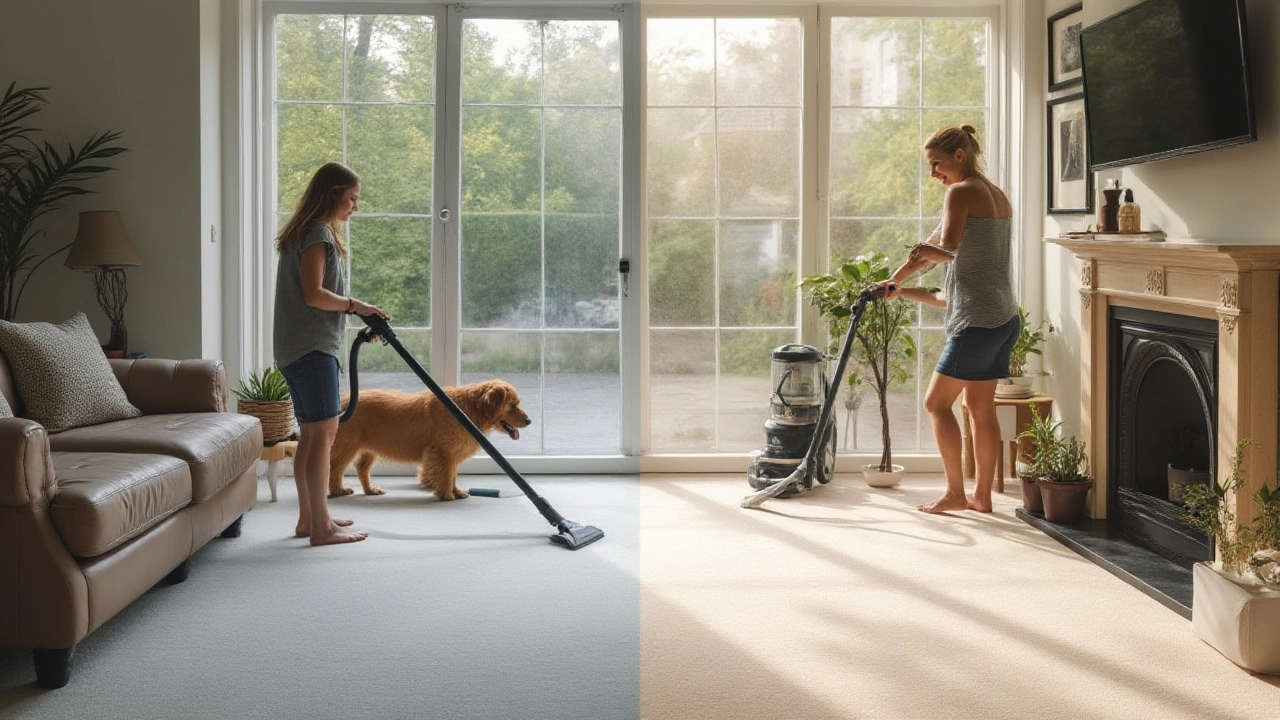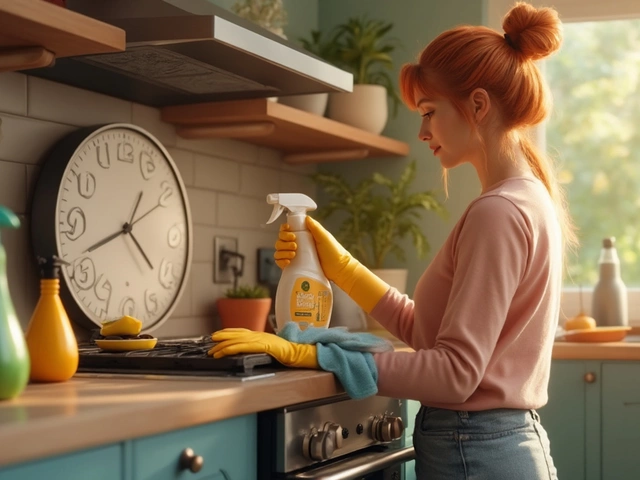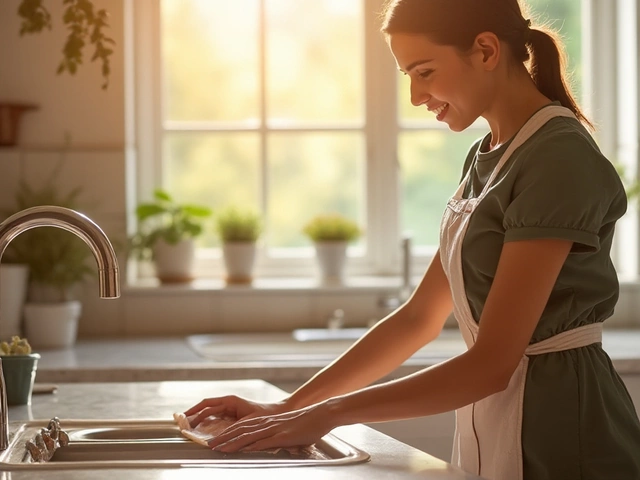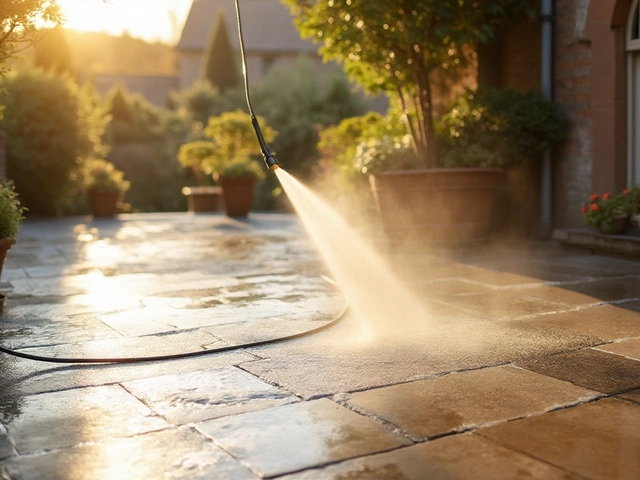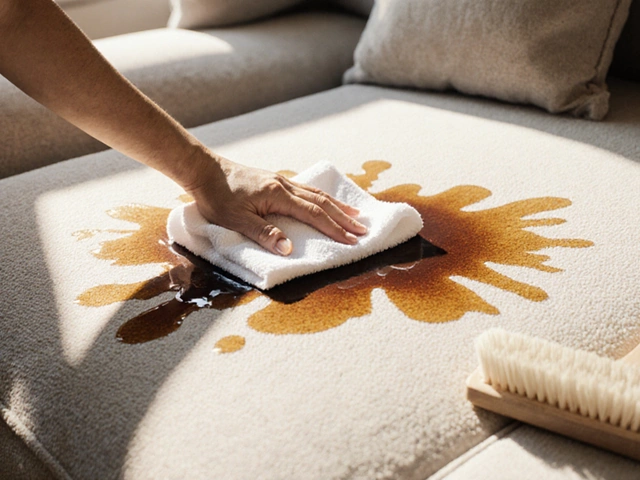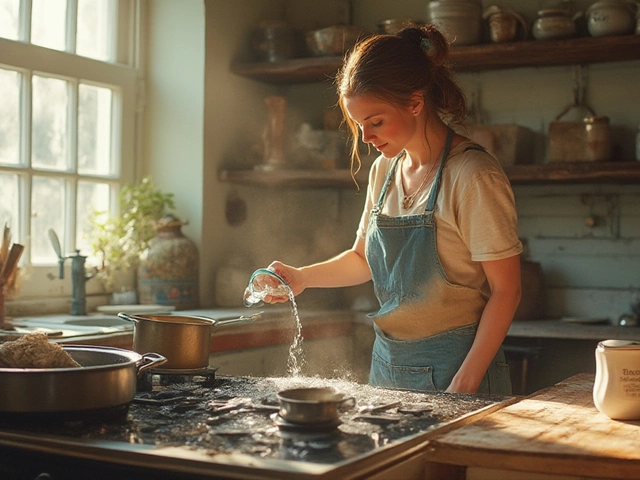Let’s be honest—stepping barefoot onto a soft, freshly cleaned carpet beats just about anything, except maybe not stepping on that mystery slime your kids left behind. But here’s the tricky part: what actually works best for cleaning carpets—should you shampoo or steam clean? Most of us choose whatever rental machine is cheapest, or maybe just pray our vacuum can work miracles. Carpets are playgrounds, picnic sites, wrestling rings, and for pets, sometimes a bathroom. The way you clean them actually matters way more than you think. The difference between a living room that smells maple-fresh and one that vaguely whiffs of “damp dog” often comes down to this choice.
The Science Behind Carpet Stains
You might think that a stain is just a mark on top of your carpet, but reality gets gross fast. Most modern carpets are made from nylon, polyester, or wool. Every material hangs onto water, oils, and dirt differently. When my son Keir spilled grape juice last summer, I learned stains don’t just live up at the surface—they work down, deep into the fibers, sometimes into the pad. That’s why that dark patch comes back weeks later. Some stains even bond chemically with fibers, which is why “scrubbing harder” rarely helps. Brightly colored drinks, mud, or pet accidents? Those all have pigments or enzymes that attach in complex ways. If you ever tried cleaning vomit out of shag, you know it’s basically 50% science project, 50% emotional challenge.
Temperature is another sly culprit. Hot water helps break down oils and dissolve certain stains, but it can also shrink natural fibers or set stains if you’re not careful. The PH of your cleaner also matters. Alkaline solutions work great on greasy kitchen dirt, but too harsh a cleaner might actually bleach color from your carpet. Dust mites, pollen, and pet dander like to settle in too. That’s why allergy sufferers sometimes feel worse after using the wrong cleaning method.
Cleaners—liquid or vapor—must actually penetrate to the base of fibers. Consumer Reports tested a dozen machines in 2024 and found that the average upright shampooer only pulled out 55% of embedded dirt. Steam cleaners did better on soil, yet struggled with heavy oil stains. This means: no single method is perfect for every mess. So before we declare a winner, you need to know what you’re actually up against inside your carpet’s jungle of fibers.
How Carpet Shampooing Works
Remember the classic Rug Doctor? Carpet shampooing is old-school but trusted. Here’s the basic science: a foaming solution is scrubbed deeply into your carpet, either by a spinning brush or through agitation from a manual machine. This foam lifts dirt, debris, and gunk up to the surface. Then a wet vacuum sucks away as much of that dirty foam as possible. The idea is you’re giving your carpet a soapy shower (just with a very overworked blow-dryer afterward).
The strengths? Shampooers are surprisingly good at lifting obvious, surface-level dirt—if your carpets are loaded up with gritty sand from a beach trip, or tracked-in winter salt, they just eat it up. Some shampoos come with enzymes that break down pet messes or neutralize odors. If your home is all about bright colors (think: purple jelly, neon glue, or mystery paint), the sudsing action can sometimes coax out stuff other machines can’t.
But: shampooing isn’t a magic wand. Too much detergent can build up, leaving your carpet feeling sticky or grimy after just a few weeks. That leftover residue isn’t just uncomfortable—dirt loves to cling to it, so the carpet gets dirty even quicker next time. It’s easy to over-wet your floors, too. On humid days, it can take 24–36 hours to truly dry, risking mildew or a lingering musty smell. Some people even report the infamous “crunchy carpet” if they walked on it before fully dry. If your carpet pad stays damp, mold can grow underneath—and trust me, no air freshener can cover that up once it takes hold.
Shampooing is best for carpets facing years of grime or lifeless fibers. But if you’re obsessed with that fresh-out-the-factory bounce, you’ll need to rinse with water thoroughly after the initial wash, unless you want soapy shoes for weeks. My tip: less is more with detergent, and always do two passes—one with shampoo, one with rinse. Bonus tip—always use a cleaner safe for your carpet type, because using a product meant for synthetics on wool can lead to color loss and brittle fibers.
| Carpet Shampooing - Quick Stats | Average Performance |
|---|---|
| Typical Dry Time | 12-36 hours |
| Surface Dirt Removal | Excellent |
| Odor Removal | Good (with deodorizing formulas) |
| Allergen Removal | Moderate |
| Risk of Residue | High (unless rinsed well) |
What Steam Cleaning Does Differently
Steam cleaning—more accurately called “hot water extraction”—is the method pros love. Despite the name, it isn’t actually pure steam but scalding hot water pumped deep into carpets and then sucked out, usually by a heavy-duty vacuum. The heat helps dissolve oily stains and sanitizes naturally. You can rent big machines or use pro services, but even my stubborn Aunt used a home unit last Thanksgiving, and her living room no longer smelled like wet dog after her old hound had that "accident."
Here’s what makes steam cleaning different: it’s all about rinsing deep. After a pre-spray loosens up dirt, the hot water rides in under pressure, chasing down bits of grime hiding at the base of carpet fibers. The extractor vacuum then pulls everything out in one heavy sweep. This method cleans deeper, breaking up and removing dried stains, dust mites, and pet dander stuck way below what you can see. If someone in your house has allergies, steam cleaning usually helps a lot. Research from the Asthma and Allergy Foundation (study from late 2023) found homes that steam cleaned carpets twice a year had 40% fewer allergy flare-ups compared to homes using shampooers only.
There’s another perk: hot water kills bacteria, mold spores, and even tricky viruses hiding in piles. With no extra detergents or chemicals left behind, the carpet dries “residue free.” Most carpets are only damp for 6–12 hours, depending on airflow and humidity, so the risk of mildew or funky smells is low. Dark spots are far less likely to return too, unless the carpet pad was already fully saturated before cleaning. Some high-end machines even add antimicrobial solutions, perfect for homes where little feet and sticky hands reign supreme. If you just moved into a new place—seriously, steam at least once. You do not want to know what’s hiding in the fibers left behind by past tenants.
But (there’s always a but): steam cleaning can sometimes shrink wool or cause dyes to run, which means if your carpet was hand-woven in India, talk to a pro before turning up the heat. Home machines rarely match industrial ones in suction power, so rented or cheap machines might leave more water behind than pros. Always make several passes, especially on high-traffic zones. If you’re going DIY, pre-treat stubborn stains, or you’ll just be spreading them around.
| Steam Cleaning - Quick Stats | Average Performance |
|---|---|
| Typical Dry Time | 6–12 hours |
| Deep Dirt Removal | Best |
| Odor Removal | Very Good (without heavy perfumes) |
| Allergen Removal | Excellent |
| Risk of Residue | Very Low |
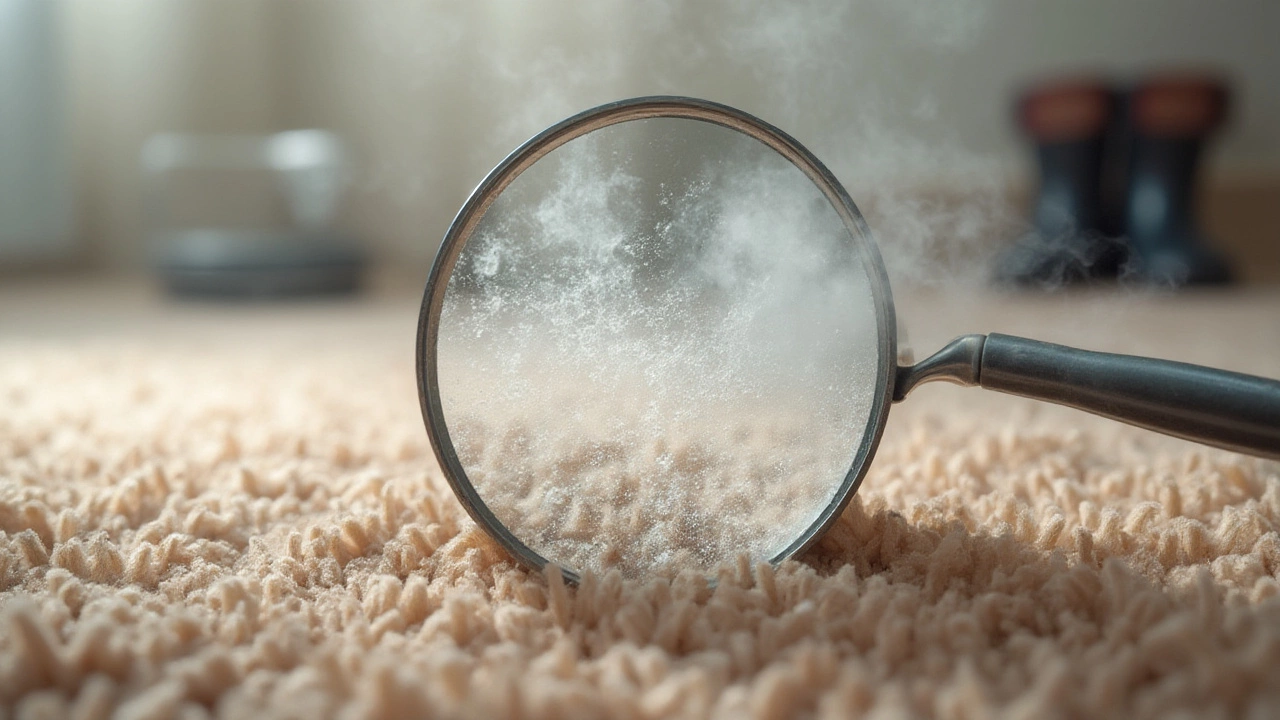
Comparing Results: Which Method Wins?
No point in sugarcoating: steam cleaning most often comes out on top, especially for deep cleaning, odor removal, and allergy control. If your carpets host kids, animals, or enough snack crumbs to feed a raccoon, nothing beats the extracting power of hot water. It’s why rental landlords and realtors almost always call in pro steam cleaners before listing a house. Think of it like dental hygiene—shampooing might scrub the surface clean for guests, but steam cleaning hits “below the gumline” and keeps smells and germs away longer.
If you’re budget-minded, though, shampooing has its place. For lightly soiled areas, or for carpets with a pile so thick a steam extractor can’t reach the bottom, foam shampoos can freshen fast. If you’re prepping a home for a party, a quick shampoo job can bring out color and fluff—provided you don’t overdo the detergent. But if you ever wonder why the same stain keeps coming back, or why your living room never truly smells neutral, check if sticky residue was left behind. That’s almost always a shampoo problem.
Here's a head-to-head:
| Feature | Shampoo | Steam Cleaning |
|---|---|---|
| Surface Dirt Removal | Excellent | Very Good |
| Deep Dirt Removal | Fair | Best |
| Drying Time | Longer (up to 36 hrs) | Shorter (6–12 hrs) |
| Allergen Removal | Moderate | Excellent |
| Odor Removal | Good | Very Good |
| Risk of Residue | High unless rinsed | Almost none |
| Safe for All Carpets? | Needs correct formula | Check before use |
There are times when a hybrid approach works great—pre-treating heavy stains with a gentle shampoo, then steam extracting everything away. Many professional services do just that. Kid- or pet-heavy households (yep, like mine) will see the biggest difference with hot water extraction. Lightly used rooms, or homes with delicate antique carpets, might be better off with old-school shampooing—carefully, and with plenty of ventilation.
Tips for Getting the Best Carpet Clean
Picking a method is just half the battle. Doing the job right is where most of us slip up. Here’s what I’ve learned through hard, sticky-fingered experience:
- Vacuum first. Every time. No matter if you’re shampooing or steaming, get all dry dirt and debris up first. Otherwise, you’re just turning crumbs into mud.
- Spot test everything. Every cleaner, even so-called “safe for all carpets” ones, can cause dye bleed or fading. Try the cleaner in a closet corner first.
- Don’t drown your carpet. Both methods can go wrong here. Only use as much solution or water as needed for each section. Too much liquid and you risk musty underpads.
- Ventilate like mad. Open windows, set out fans. Faster dry times mean lower risk of mildew—critical in humid summers or basements.
- Aim for twice a year. American Cleaning Institute’s survey from 2024 showed most U.S. homes were deep cleaning their carpets just once a year. Those who managed two times reported better air quality and longer-lasting, less stained carpets. It’s a slog, but worth it.
- DIY isn’t always cheaper. Rental machines cost less up front but chew through detergent and require you to supply elbow grease. Professional services often include spot treatments and quick drying, which can actually save you hassle, especially before moving in or out.
- Watch for warning labels. If your carpet warranty specifically says “no steam,” or “no shampoo,” follow the rules. Otherwise, your future claim for a ruined living room may get denied.
- Don’t skip the rinse. If you shampoo, follow up with a clear water rinse. No one likes crunchy socks—or sticky feet.
By the way, forget the myth that more detergent means more cleaning power. Too much, and you’ll just be back at square one sooner, wondering why everything looks mucky right after cleaning.
Should You Switch Up Your Carpet Cleaning Routine?
Still on the fence? Here’s one useful way to decide: what does your carpet actually face every week? Busy households with dogs (or energetic kids like Keir) benefit most from deep, thorough steam cleaning, even if it means hiring out once a year. Steam is more effective for removing dander, grease, pollen, and those occasional “surprises” left by toddlers or cats. If your carpets are old and have seen better days, steam cleaning might even restore some of that lost spring and color.
For delicate, low-traffic rooms, a gentle shampoo every few months, combined with diligent vacuuming, keeps things fresh without risk. Antique rugs and handmade wool carpets need extra care—always check the manufacturer’s tags or ask your favorite local carpet guy for advice. Some rare carpets really can shrink or fade with hot water, so tread carefully.
And don’t ignore maintenance between deep cleans. Invest in a quality vacuum with a HEPA filter, and do quick spot-treats the moment spills happen. Shoes-off policies, even if they feel fussy, dramatically slow down wear and tear. I once tracked in road salt from a January snowstorm and spent weeks fighting the crusty white marks, so trust me—socks only is the way to go for winter.
There’s no shame in outsourcing, especially for tough jobs or post-party disasters. But knowing the difference between shampooing and steam cleaning—their strengths, their weak spots, their risks—keeps your carpets lively, safe, and that much cleaner for every movie night, surprise Lego, or pillow fort your family throws at them.
